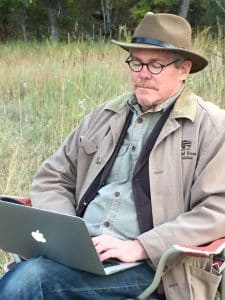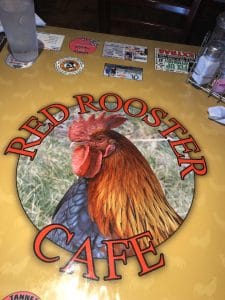So, you’re a productive American farmer?

I have watched the evolution of the Productive American Farmer.
My farming friends and I have witnessed the family farm become agribusiness.
Once they were broad and diverse operations, some cows, some sheep, some hogs, some corn, some soybeans.
Today diversity in animal husbandry is a rarity, specialization seems the most lucrative route.
They now specialize in very specific crops like corn and soybeans or cow or pigs. We now nurture pigs to fit in certain size cans.
Indeed we have come a long way……
As an outsider the view seems increasingly myopic.
Do farmers of today know where they came from?
Here is a short story and list of how we came to be, the proud and productive American Farmer.
Kicking it off, we’ve only been agrarians for 7 to 11 thousand years.
That’s a blink of an eye considering we’ve been hunters & gatherers maybe 50 thousand times longer..
As intelligent and well read as many of my farm friends happen to be I have always wondered if they know the following about their occupation.
#1. When we became farmers it happened in a flash. In as little as 2,000 years. Farming or pastoralist herders spread most everywhere in the world except Antartica.
(Yes, there are still a few tribes of hunters and gathers around the world). It spread rapidly for a number of reasons but a primary reason it succeeded was that hunters and gatherers could not produce as many children that farming communities could produce.
The hunters were on the move and couldn’t reproduce as quickly while traveling with one to five year old children tagging along.
#2. As Hunters and gatherers they needed about 2500 calories daily to survive. It is purported that a farmer required nearly twice that many.
Consider this scenario, a hunter spends a day or two each week hunting and a few days gathering. Realize that on the Savanas of Africa when a hunter needed meat he would select some sort of deer or gazelle in the distance and just run them down.
Understand that though deer are faster than humans they lack the endurance. It might take a day of casual running but eventually the deer tires out and the hunter easily brings home the food. The human had endurance in their favor.
The farmer needs are different and he uses up many more calories. He needs to clear the land, till the soil, select the grain, store the grain, plant the grain, weed the crops, harvest the crops and store the crop, all before he gets a meal.
Today much of this is done with the flip of a switch, a combustion engine, computer technology and prudent overseeing.
#3. Consider this, When we were hunters and gatherers we were generally an inch or two taller, more fit and far healthy. Our diets varied not only daily but also seasonally.
#4. When we became agrarians we shrank in size because of a limited diet of specific grains, most farmers were nearly mono-culturists. Luckily, today our diets are much more varied.
Our teeth became bad and our life expectancy decreased. We stone ground our grains and that caused rapid dental decay.
#5. As agrarians we immediately began to pollute our resources , where as hunters and gatherers exploited a resource and then moved on to greener pastures.
#6. The agrarian started raising livestock and all open water supplies became a source of pollution. There was always a farmer upstream who’s cattle were pooping in the river.
#7. Many people believe that we raised and developed the various shatter grains for types of bread. There is a new line of thought that is much to the contrary. It has to do with fermentation.
#8. Throwing a handful of barley into a crock of polluted water could effectively render the water harmless in about three days. An ever so slight fermentation process begins and creates a biologic atmosphere that kills bacteria.
You can find a dramatic example on You Tube, London school children going the the pond at St. James Park and with the aid of a microscope view the teaming bacteria and biodiversity held within their beaker of thoroughly polluted water.
Next they threw in a handful of barley or some grain and within the coming days rendered the water nearly safe to drink. (I don’t think anybody considered drinking it) A risky process but it allowed them to survive down stream from their neighbors.
Today we continue to face similar challenges.
#9. If you were one of those people that adhered to this idea, your clan survived longer than others. It was primitive empirical observation, intelligence and adaptability that remained the key.
#10. Mankind has had at its command thousands of species of animals and yet only a handful are capable of being domesticated. We pursued domestication with a passion starting with the wolf.
#11. Most all of the domestication occurred around the time we started to embrace the agrarian lifestyle. We haven’t domesticated anything new in the past eight thousands years, or at least very, very few.
The genetic technology that we use today has in some ways been around for 10 thousand years. Farmers selected the best seeds and grains to replant. They selected the best bull and best cow for breeding.
#12. Today we’ve become so myopic that we study the genome of our speciality and very little else.
#13. I suspect few of my hog farming friends know much about the origin of their pig beyond the taxonomic. Few know that their animal could be viewed as a politically diagnostic species in middle eastern/Biblical times.
It is purported that archeologists have found a curious pattern of hog production in ancient times.
When times and governments were dependable, interstate commerce flourished. This meant that cattle, goats, sheep and yes hogs were herded to distant markets.
Even though hogs didn’t enjoy a hot desert climate they had a very specific place in ancient Middle Eastern societies.
During Biblical times when times were bad (about every 400 to 500 years) and when governments devolved, cattle, sheep, and goats didn’t make it to distant markets.
The locals increased their own production of pigs, raised in their own backyards. These pig bones are found in the middens throughout the Middle East and serve as testament and an indicator of political and economic times.
The humble pig had its place amongst all of society but eventually became a symbol of what not to eat in the culture of Judaism. (And how that came to be is a whole other story)
#14.Centuries flew past and then along came Queen Victoria and King Albert of Great Britain, they consciously gathered species of livestock and poultry from all over the world in hopes of cross breeding various species into more productive varieties.
They were into animal husbandry and it paid off for them and the world.
#15. During the early 1800’s they recognized that chickens had little value throughout the world even through the Middle Ages. They were scrawny, and quite limited with egg production.
Their main benefit was that they would live along side humans and compete for foods that did not compete with the human diet.
They ate bugs and we appreciated them for that trait, they helped tend our gardens.
#16. On a fateful day the King and Queen crossed a Cochin chicken from China with a dorking chicken that was a British breed from Surrey and over night the size of chickens increased nearly two fold!
The egg production also doubled. Chickens became a viable food source almost over night and by 1854 the Smithfield market in London was selling 10,000 chickens per day. (HenryMayhews-Londoncirca1856)
Colonel Sanders of Kentucky Fried Chicken made his fortune directly because of the scientific efforts of Queen Victoria and King Albert.
A productive American Farmer was born.
Just another day on the farm.
www.billkeitel.com


